amazingly phat Super Saw oscillator
for the prologue, minilogue xd & NTS-1
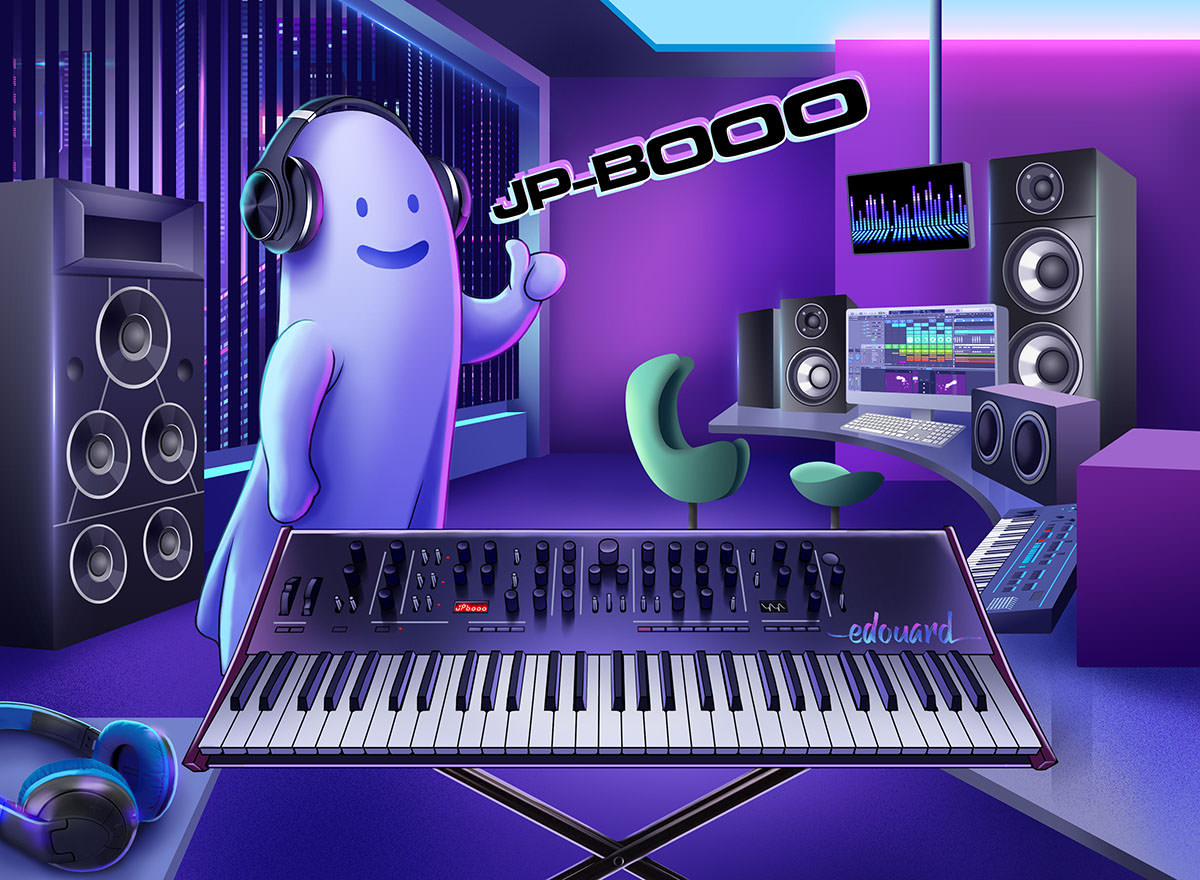
Instant gratification.
A staple of electro.
The ghost of the genre-defining Super Saw is coming back…
with a sound so realistic it’s scary!
The story of Super Saw
In early 1997, Roland introduced a cult synthesizer, that was seen as a modern digital incarnation of the classic analog Jupiter-8 from 1981. Offering a very intuitive interface with 40 knobs and sliders, and a large breadth of sounds, it soon became a classic itself as it was used by The Prodigy, Nicky Romero, Depeche Mode, Gary Numan, BT, Paul Van Dyk, Faithless, Dash Berlin, Pet Shop Boys, The Crystal Method, Orbital, Ken Ishii, Vince Clarke, Goldie, Dave Holmes, Groove Armada, ATB, Überzone, Ferry Corsten, Scooter, Konflict, William Orbit and Garbage.
Though it was a virtual analog—or analog modeling—synthesizer, it was digital at heart, with a lot of grit that made it perfect for all styles of electronic music. But there is a more specific reason why it became so famous and appreciated: the first of its two oscillators offered a revolutionary brand new mode, named Super Saw. Instead of the classic sawtooth, square and triangle waveforms, the oscillator would generate seven detuned sawtooth waves played at the same time on each of the voices. It allowed the creation of both harsh “fat” leads when used raw, and smooth “creamy” pads when filtered, and it quickly became the defining sound of the trance genre, and a staple of electro, techno, drum’n’bass and house.
How it became difficult to access
In these days of digital abundance, one couldn’t be blamed for thinking it must be easy to use it in compositions and live sessions. However this cult synthesizer is no more on sale, and it is considered that nothing sounds close to the inimitable Super Saw oscillator. Much more than a static waveform that could simply be sampled, it has two dedicated parameters, each controlled by a slider, that can interact and drastically change its sound in a very characteristic way.
Detune controls how much each of the six oscillators is detuned both lower and higher from the central oscillator that remains fixed at the root frequency that corresponds to the note being played. When set to zero, all seven oscillators have the same frequency. At the maximum value, three oscillators are detuned to frequencies at different distances above the central frequency, and three other oscillators to frequencies below the central frequency, in a quite symmetrical way.
Mix controls the volume of the six detuned oscillators relative to the central oscillator. When set to zero, the detuned oscillators can barely be heard, but still very slightly. When set to the maximum, each of them becomes actually louder than the central oscillator.
Roland included the very same sound engine on the rack version of their cult synthesizer, but when they added the Super Saw to newer instruments, it was quite different. While the Detune and Mix controls sound fairly the same, the waveshape is visibly different as our oscilloscope tests have shown with a V-Synth XT, even with both Detune and Mix set to zero. Later, other manufacturers and virtual instrument developers have tried to create a similar oscillator, like the Virus TI HyperSaw, but feedback shows that they’re further from the original and that the Super Saw remains unmatched… until today.
What JP‑BOOO 👻 does right (that others don’t)
It is not possible to sound anything close to the Super Saw oscillator with a sawtooth wavetable, as emulations mostly do, because doing so is band-limited and lacks the aliasing that creates on the original this very bright and airy tone thanks to a lot of additional high frequencies. JP‑BOOO 👻 takes this into account.
The aliasing, because it creates both high and low frequencies, is selectively limited on the original oscillator by applying a high-pass filter that dynamically filters out frequencies below the fundamental harmonic frequency, leaving the welcomed high-frequency aliasing content intact. This filter generates a very distinct smooth waveshape that doesn’t look like a linear sawtooth anymore. JP‑BOOO 👻 takes this into account.
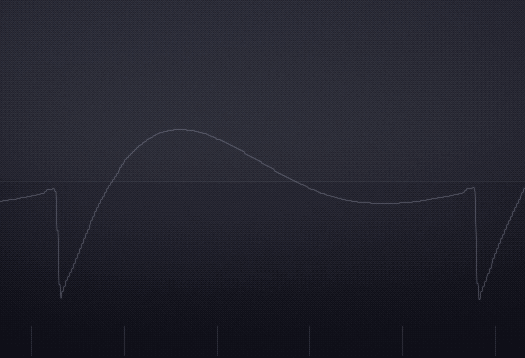
When the Detune parameter is changed from zero to maximum, the change is not steady on the original. The frequency gap between each oscillator is not the same, it gets wider for the farthest ones, following a specific ratio. Moreover, a non-linear curve is applied so that there is finer control for the smallest amounts of detune, then it slowly becomes faster until it suddenly becomes a lot coarser at the very end. Emulations mostly have an equidistant or inaccurate spread, while they also have a linear or imprecise change curve. Also, when set to zero, a slight Detune can still be heard (with a high enough Mix). JP‑BOOO 👻 takes this into account.
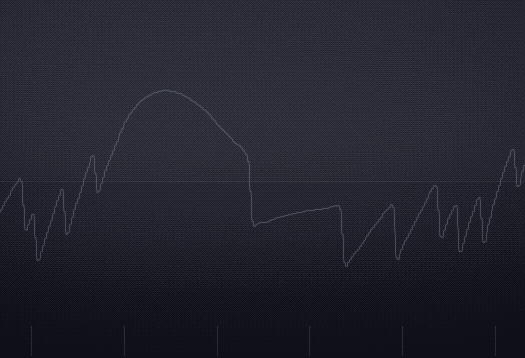
While the Mix parameter decreases the central oscillator’s volume to a bit less than half its initial value, in a linear way, as it goes from zero to maximum, it increases the six detuned oscillators’ volumes, on the other hand, in a non linear way. At the end of the range, the detuned oscillators stop getting louder while the central oscillator continues to get quieter. While emulations mostly apply a linear curve, JP‑BOOO 👻 takes this into account.
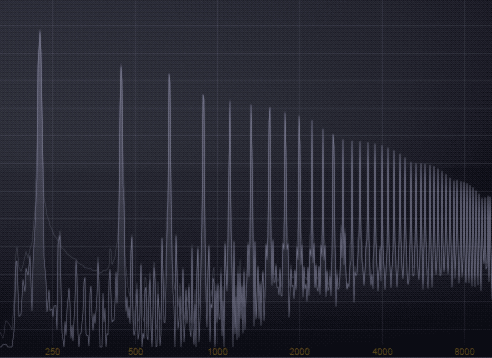
Also, even at the same pitch, each note played with the Super Saw is different, because its seven sawtooth waveforms are not played from the start, but rather with a random phase, as seven independent free-running oscillators. You guessed it, JP‑BOOO 👻 takes this into account.

Who made it?

Electronic music producer and original French Touch artist Edouard used his background as a software engineer to create JP-BOOO 👻.
What do people think about it?

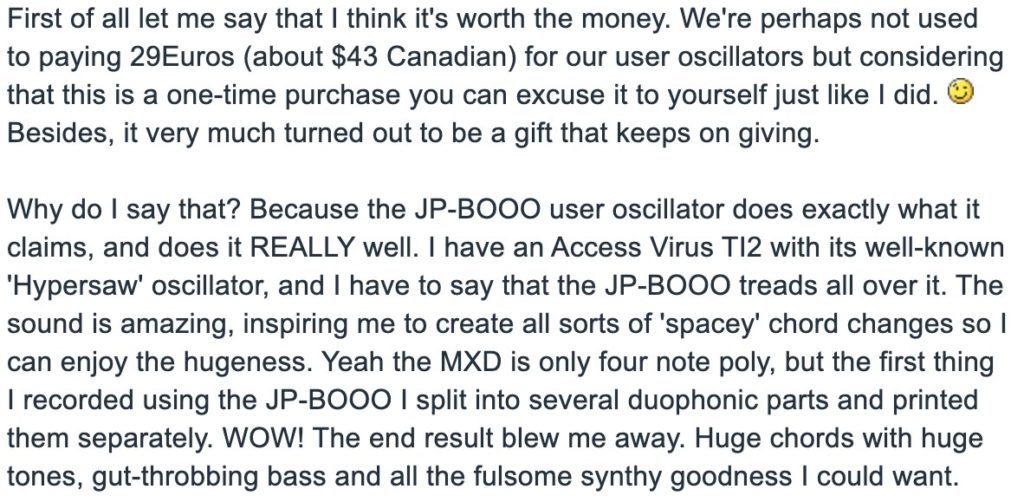
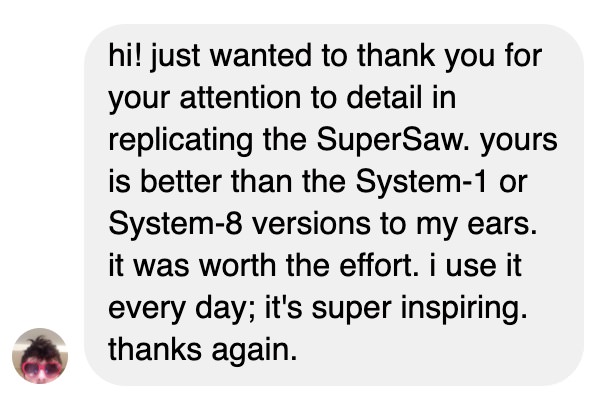
The easy choice
Not everyone can buy that vintage synthesizer, as they run in the range of $700 to $900. Adding JP‑BOOO 👻 to your KORG prologue, minilogue xd or NTS-1 is incomparably easier and more affordable!
On both the prologue and the minilogue xd, you can use the Shape knob to change the Detune and Shift+Shape to change the Mix. On the NTS-1, you can use the A knob to change the Detune and the B knob to change the Mix.
Thanks to JP‑BOOO 👻, you can now use a realistic oscillator inspired by the Super Saw, along with the analog oscillators and filters of the prologue and minilogue xd, and with your favorite effects and custom modulations on the prologue, minilogue xd and NTS-1.
If you have a prologue 8, you will have 8 voices, as many as there are on that cult synthesizer, and if you have a prologue 16, you will have twice as more!
Roland, Jupiter-8 and V-Synth XT are registered trademarks of Roland Corporation. Virus TI is a registered trademark of Access Music Electronics GmbH. Use of these names does not imply any affiliation with or endorsement by them. JP-8000 and JP-8080 are registered trademarks of Roland Corporation.
Are there any presets available?
Yes. Please note that KORG made the preset format different between the prologue and the minilogue xd, so you will have to get and use the file that corresponds to your synth. NTS-1 does not handle presets.
CO5MA’s SupaSaw
We are proud to announce that renowned Swiss sound designer CO5MA has released SupaSaw, a free set of 8 patches for the minilogue xd and JP‑BOOO 👻. We also include the presets converted for the prologue.
CO5MA SupaSaw (requires JP-BOOO)
How do I install those presets?
Follow the instructions in the user guide of the Sound Librarian. If you have installed JP‑BOOO 👻 in position #1 (nice choice), upload the presets that are located in the folder “JP-BOOO in slot 1”, else if you have installed JP‑BOOO 👻 in position #2, upload the presets located in the folder “JP-BOOO in slot 2”, and so on…
Why are there 16 folders in each presets pack?
Due to preset format limitations in the prologue and minilogue xd, presets contain only the slot number of the user oscillator, not its name or identifier. This would normally prevent any sharing of presets that use a user oscillator: if the slot number you chose is not the same as the one used by the preset creator, you cannot use the preset, and you cannot fix it either, because if you manually change the user oscillator type, you lose all the parameters of the preset.
However we have developed a workaround: we generate 16 versions of each preset, one for each potential slot (16 possible positions). A limitation is that if you decide to change the order of those of your user oscillators that are used in presets, you will have to reupload the presets, using the ones made for the new slot number.
